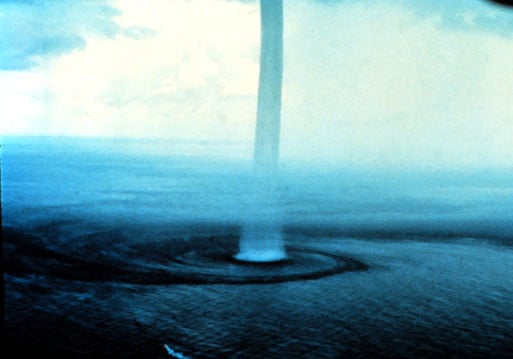What the (Water) Devil?
Water devils and waterspouts are an impressive natural phenomenon. Learn more about these "sea serpents."

Imagine this: It’s the middle ages, and you are a fisherman with a small wooden boat. Every morning, you and your neighbors head out to sea to catch your livelihood. One morning, as you drop your nets, a serpentine column rises out of the water with an eerie groaning sound. It towers at least 1,000 feet above your boat as it weaves drunkenly across the surface of the water. You watch in horror as it approaches another fisherman’s boat, reducing it to splinters in a matter of seconds and dragging your comrade into the roiling sea beneath it. Then, as quickly as it appeared, it slips back beneath the waves without a trace. Throughout your entire ordeal, the sun shone brightly, and only a few small, fluffy clouds marked the sky. Whatever it was that you saw, one thing is certain; you’ll be a popular man at the pub tonight …
This type of occurrence — along with sightings of whales and other impressive sea life — is likely responsible for many of the more colorful historical accounts of deadly monsters lurking in our oceans. What is described here, however, is not a sea serpent, but a type of tornado called a waterspout. At lower levels of intensity — usually not severe enough to destroy a boat — waterspouts are often referred to by the more poetic name “water devils.”
Waterspouts generally occur during warmer months — from May to September in the Northern Hemisphere. Like tornadoes, they are cyclonic disturbances that form when fronts of high and low pressure collide. Unlike tornadoes, waterspouts often occur when the weather is otherwise fair. Waterspouts can form over any body of water, are usually short-lived, and are rarely as destructive as land tornadoes. Even so, they are impressive, and can reach heights of up to 3,000 feet!
Sea serpent or not, seeing a waterspout or water devil is definitely a tale worth sharing.

Jaime McLeod
Jaime McLeod is a longtime journalist who has written for a wide variety of newspapers, magazines, and websites, including MTV.com. She enjoys the outdoors, growing and eating organic food, and is interested in all aspects of natural wellness.





